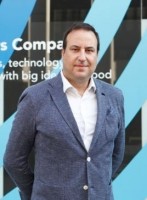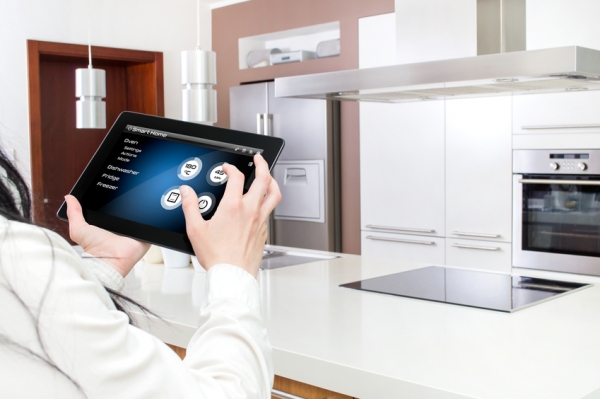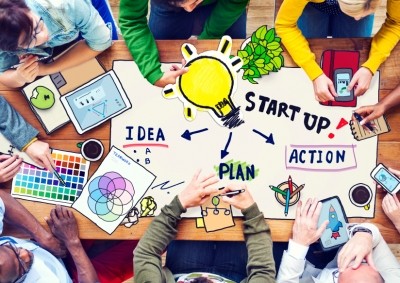Is your firm ready for 3 waves of disruptive food innovation?

The fusion of food and technology has become such an intrinsic part of our food system that it has led to the creation of a new economic growth model, and will undergo changes in three distinct waves, according to Robles who heads up Reimagine Food, a Spanish consultancy that brings together food tech start-ups, investors, chefs and food and beverage firm.
Its aim is to help these actors channel and apply the latest innovations to create new products, identify new markets or set up new business models; it is working with over 25 food and beverage firms including Nestlé, Carrefour, Heineken, Barilla and Danone.
The first wave: The 'uberisation' of food
So what are the defining features of these three waves? The first, which started last year and will continue until 2018, is marked by a fundamental change in consumption and distribution models.
“This is the 'uberisation' of food,” says Robles. “We can understand it as the collaborative economy applied to food.”
Robles is not alone in seeing the sharing economy as a mammoth change. PriceWaterhouseCoopers estimates a revenue opportunity of as much as $335 billion (€298bn) by 2025, with up to 64% of adults participating in some form of collaborative service, be it transport, accommodation, music or electronic equipment.
“The food sector will not be left out of this economic trend,” says Robles. “Uber, currently valued at $50 billion (€44.5bn) – twice as much as Renault without owning any vehicles – has already launched [food delivery service] Uber Eats to capitalise on its extensive client network.
And it’s an increasingly busy space. Eatwith and Mealsharin are just two of the companies connecting consumers so they can eat restaurant-quality meals in the comfort of someone’s home while meal kit delivery services, such as BlueApron, allows individuals to try out recipes themselves.
The numbers suggest that this is no niche trend. Last year it was reported that, for the first time, Americans spent more dining out than they did on grocery food purchases for the home.
“This means that food manufacturers and retailers need to start giving serious thought to the threats and opportunities that this represents for their business. In an industry where consumers are increasingly demanding greater innovations from both manufacturers and suppliers, it is impossible to achieve this with the obsolete models of today. Consumers are not looking for innovations that arrive through traditional channels.”
The second wave: Smart kitchens
The ‘second wave’ from 2018 to 2022 will see this technology enter the home.
At the minute, the kitchen appliances that we use every day have not changed for 80 years and although we use them constantly, it’s a one directional use with no interaction.
This is the first thing that will change and some big brands – Samsung, Siemens, Bosch – are already challenging this unilateral relationship with ‘smart fridges’ that detect the foods they are storing and inform the consumer of freshness, nearing expiry dates, useful recipes and even draw up shopping lists.
Everything will be connected, says Robles – kitchen cupboards to supermarkets, cold press juicers to online recipes, electronic forks to personalised nutrition data that monitors eating habits and tells the individual to slow down.
So who are the target consumers for this technology?
EATnomics
Reimagine Food organises a series of conferences, called EATnomics, on disruptive innovation in the food industry. EATnomics kicked off earlier this year in Barcelona and will be held in London, Singapore and the US with future speakers from Google, Airbnb and the Massachusetts Institute of Technology (MIT).
Millennials to start with – but falling costs of technology will remove barriers for most people. “In terms of food we will see a similar situation as with mobile technology, where even consumers with a low spending power wish to have, and in fact do own, the latest models.”
“The adoption of these technologies will take place at an increasingly rapid rate, particularly in the case of food. If we think about it, 89% of consumers look up cooking recipes online; this was unthinkable just six years ago. It may not be exactly the same, but it is a reality. I am sure that in less than four years we will start to have these interactions in our everyday lives.”
The third wave: Smart food
In the third wave, which Robles sees developing between 2022 to 2025, food innovation will be bigger than ever – and yet so small it cannot be seen in some cases.
“The most futuristic, nanotechnology will enter our stomachs as ambitious projects start to see the light. Cities will be able to analyse the quality of life of their inhabitants through their food and arable land will be rendered unnecessary.”
Cultured meat from the lab; salads grown using aeroponic technology without natural sunlight or soil; nutrient dense algae powder dispensed at the push of a button doing away with the need for a farmer - is this the kind of future that we want to see for our global food system?
Robles is under no illusion that some may see his predictions as some kind of future dystopia.
“These biohackers and entrepreneurs are considered by some as the generation that will save the planet. Others believe they will destroy our whole relationship with food as we know it today,” he says.
But, for his part, Robles sees it as an opportunity for positive change and rejects the idea that consumers will become disconnected from the origins of their food.
“On the contrary. I believe that technology will offer us the possibility of being closer than ever to farmers and their produce, as well as greater transparency and an unprecedented level of traceability. Nevertheless, it is also true that in some cases food will come to the table from the laboratory.”
Beyond these benefits however, we may have no choice, he adds.
The UN’s Food and Agriculture Organisation (FAO) has said that agricultural output needs to increase by 75% in order to feed a global population that is tipped to be 9.6 billion by 2050.
“I believe that it is the only possible path. Our resources are running out so we must start to analyse other alternatives. Either we start to embrace the necessary measures to drive the evolution of precision agriculture or else humanity will have to face some very big problems.”





























